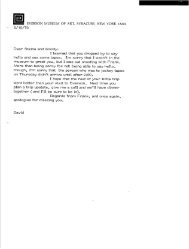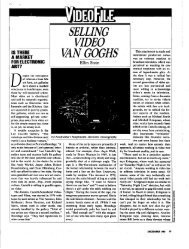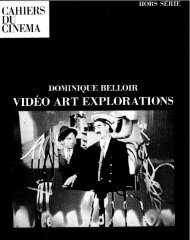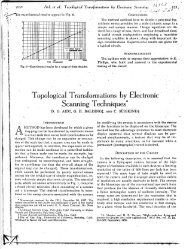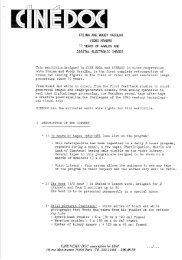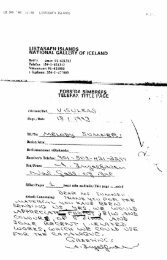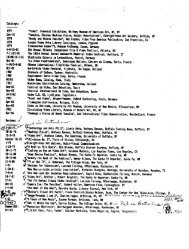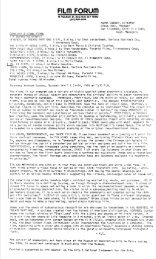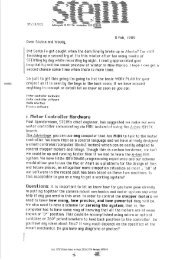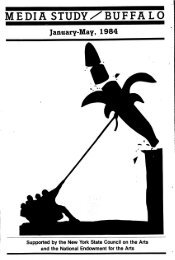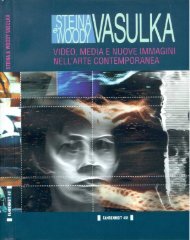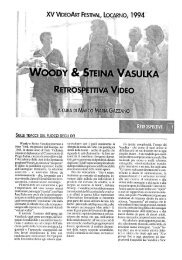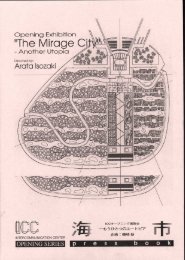Chapter 4: A HISTORY OF COMPUTER ANIMATION ... - Vasulka.org
Chapter 4: A HISTORY OF COMPUTER ANIMATION ... - Vasulka.org
Chapter 4: A HISTORY OF COMPUTER ANIMATION ... - Vasulka.org
You also want an ePaper? Increase the reach of your titles
YUMPU automatically turns print PDFs into web optimized ePapers that Google loves.
<strong>Chapter</strong> 4 : A <strong>HISTORY</strong> <strong>OF</strong> <strong>COMPUTER</strong> <strong>ANIMATION</strong> 3/20/92 30<br />
smoothed and followed-sort of the digital equivalent of the<br />
mechanical panograph follower . It is significant to note that control<br />
points can be edited, that new control points can be merged in and<br />
existing control points removed ; timings may also be edited .<br />
Analytical checks may be performed to see if panning rates<br />
will produce strobe effects ; if so the computer can send back a<br />
suggestion to change speed . Boundary conditions may also be<br />
verified, and actions like trying to move the camera through the<br />
floor are restrained . In motion control rigs the software should also<br />
alert the cameraman when the camera is including the rig in the<br />
photograph or trying to take pictures when its mounts are in the<br />
way . The polite system also warns the cameraman if the shutter is<br />
closed or if the camera is set to shoot backwards .<br />
Motion Control<br />
Motion Control is the extention of motion graphics into the<br />
third dimension and is the repeatable control of real cameras and<br />
props, this involves notating positions as well as recording actions<br />
generated in the real world . The first motion control systems<br />
employed analog electronics and were built by Olin Dupy at MGM<br />
(1949) . During live action photography Dupy's "repeater head"<br />
recorded pans as signal amplifications on a phonograph disc . To<br />
replay the action, for example to rephotograph a matte painting, the<br />
disc was played back and the recorded signals were amplified to<br />
drive a pan motor in the head, so that the camera moved the same as<br />
it moved originally (fig . 4-51) . If you want to record pan and tilt,<br />
think stereo . And if you want to record camera pan and tilt, focus,<br />
shutter angle, dolly movement, or even the consecutive angles of a<br />
jim arm or crane, then think in terms of a multi-track recorder .<br />
Computerization of equipment to photograph props and models<br />
is more complicated than computerization of equipment to<br />
photograph artwork . The first multi-axes camera and compound<br />
table rigs (fig 57 .5) were built in California by Trumbull, along with<br />
John Dykstra . The effect of this revolution was an expanding visual<br />
51 . The repeater head and the Dupy Duplicator. In the analog<br />
domain camera movements are sensed by electrical shaft encoders<br />
attached to a geared head, and changes in the position of the head<br />
produce changes in voltage . The fluctuations can be recorded<br />
analogicly . Temporal synchronization between the recording and the<br />
camera is achieved mechanically with the common drive motor.<br />
Playback is accomplished by simple amplification .



